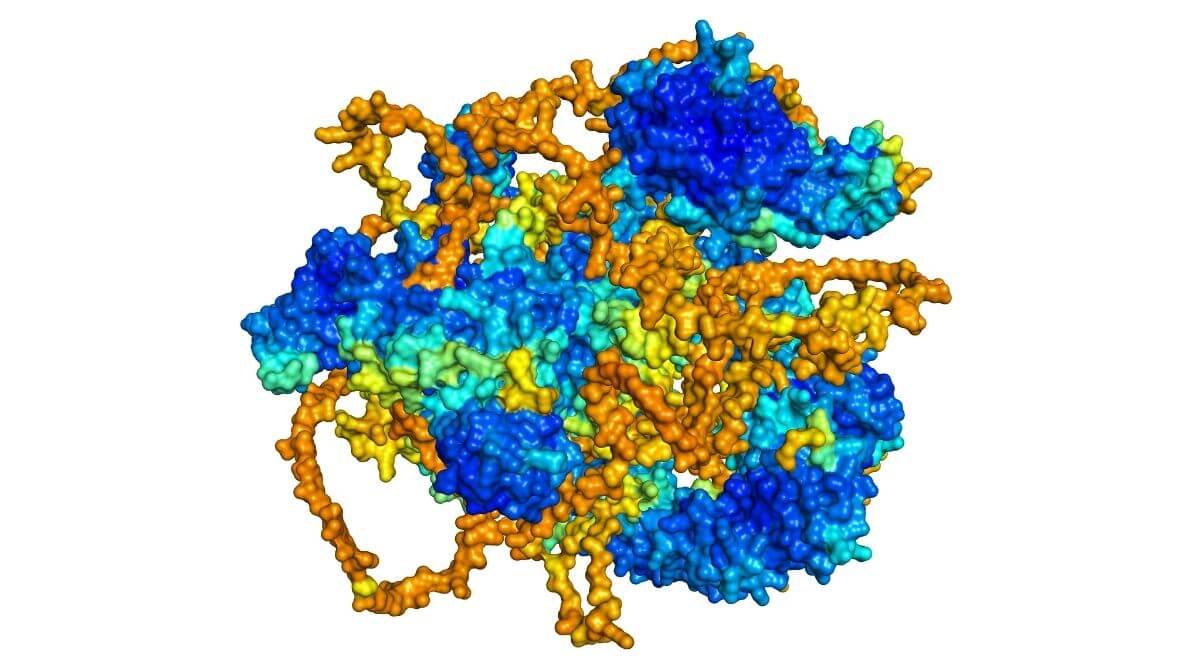What is DeepMind?
Deepmind AlphaFold protein folding structure prediction: DeepMind is a company that combines a variety of disciplines to develop artificial intelligence (AI) technology to aide the push for new ideas and advance scientific research. The companies unique approach unites a range of experts from computer engineering and mathematics to neuroscience. Since the origin of DeepMind, the company became a subsidiary of Google which has helped push cutting-edge AI research at a rapid pace to solve real world problems. A few examples of DeepMind’s impact include enhancing product efficiency and creating programs to recognize common eye diseases as well as the latest advancements in protein structure research, AlphaFold.
Why is AlphaFold important?
The human body is a machine comprised of tiny parts that we know as proteins. Each protein folds into a specific shape that allows it to execute its exact function. They help our neurons transmit messages, make our hearts beat, and help us complete every unique task we perform daily. Some researchers spend their entire careers studying a single protein and how its shape determines function or what may happen when the wrong shape is formed. However, there are currently at least 20,000 known proteins in the human body, and there are not 20,000 scientists dedicated to studying each protein. This means what we know about protein structure is just a tiny drop in the ocean. The ability to understand how proteins fold can help us decipher the puzzle of how protein structure and function are related. AlphaFold was created by DeepMind to fast-track how this research occurs, enabling us to solve complex problems including how disease can occur and even helping us crack the code to treat diseases.
As noted above, protein misfolding can lead to many diseases including lysosomal storage disorders where our cells can’t break down toxic material in our cells or degenerative disorders like Alzheimer’s and Parkinson’s diseases. If scientists can understand how proteins fold properly, it will provide us with more tools to address how proteins can fold incorrectly. Insight into how protein misfolding can occur will allow for breakthroughs in research surrounding how we can create therapeutics that can prevent the misfolding or even correct it after it occurs. With that in mind, it is easy to appreciate the excitement surrounding the creation of AlphaFold. The technology is monumental for scientific research and advancing medicine, and this year AlphaFold became freely available to scientists around the world.
How does the AlphaFold program work?
AlphaFold is an AI system that can accurately predict the 3D protein structure based on solely the linear amino acid sequence. The AlphaFold program is a type of network capable of deep learning which means it detects and solves parts of a big problem, then puts the pieces together for a solution. The dilemma: the protein folding problem.
The AlphaFold program approaches protein folding with a series of steps. The amino acids are the building blocks of every protein, and every combination can result in a different protein with a unique function. AlphaFold looks at a given instruction sequence and compares it to available protein sequence databases. By doing this, AlphaFold can create an alignment of the available sequences and find similar, but not identical, amino acid sequences. The program then uses a series of modules that help to filter out relevant and irrelevant data that it can use to solve the structure. This information includes the relationship between amino acids that are adjacent and those that are farther apart. Information gained in prior steps is used to work out the next piece of the puzzle. Each step helps refine what the algorithm determines to be the final 3D structure.
DeepMind’s ground-breaking AlphaFold neural-network-based algorithm performed so well on the protein folding problem that it may be able to outcompete traditional structural determination methods that are often slow and expensive. Before AlphaFold, about 17% of the 20,000 proteins in the human body had an experimentally determined structure, but now the world has access to around 98% of the human proteome. AlphaFold predicted over 50% of those structures with high or very high accuracy which is ages ahead of where research once was. The best part of this remarkable AI technology? DeepMind and the European Molecular Biology Laboratory’s European Bioinformatics Institute (EMBL-EBI) developed the AlphaFold protein structure database to provide open access of its protein structure predictions for the human proteome. The hope is that making protein structures freely available creates an environment for accelerated protein research and therapeutic innovations.
How is Gain Using AlphaFold?
Thanks to AlphaFold the structures of every protein in the human body is now open-source and publically available. But how exactly does this help drug discovery and how is Gain Therapeutics utilizing this data? Gain Therapeutics’ drug discovery platform SEE-Tx®, uses the 3-dimensional structure of the protein as the starting point of the drug discovery process. Traditionally, this has been done using well validated structures achieved through methods such as x-ray crystallography. While this has been successful in the past, and all of Gain Therapeutics’ pipeline products were discovered this way, it is limited in that if there is no public structure for a protein, the platform technology cannot identify suitable targets and drug candidates.
With the AlphaFold announcement, this is no longer the case. Gain Therapeutics can now use the predicted structure in place of the traditional structures from literature which unlocks the potential to target and drug any protein implicated in disease. The accuracy of the AlphaFold predictions enables the company to achieve the same level of success and has effectively doubled the protein targets for the company.
Featured Image shows 3D rendering of protein as predicted by AlphaFold and colored according to confidence


